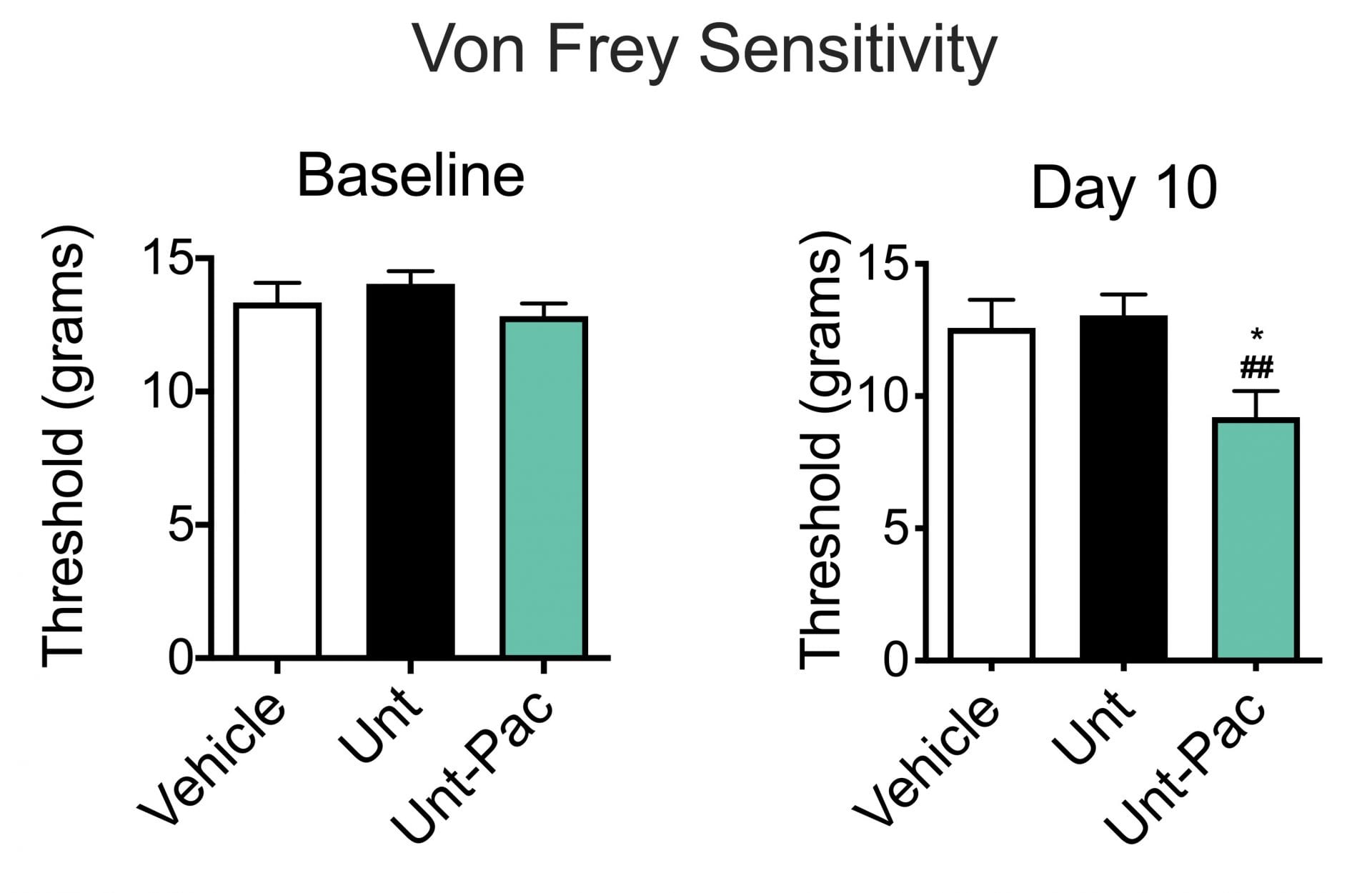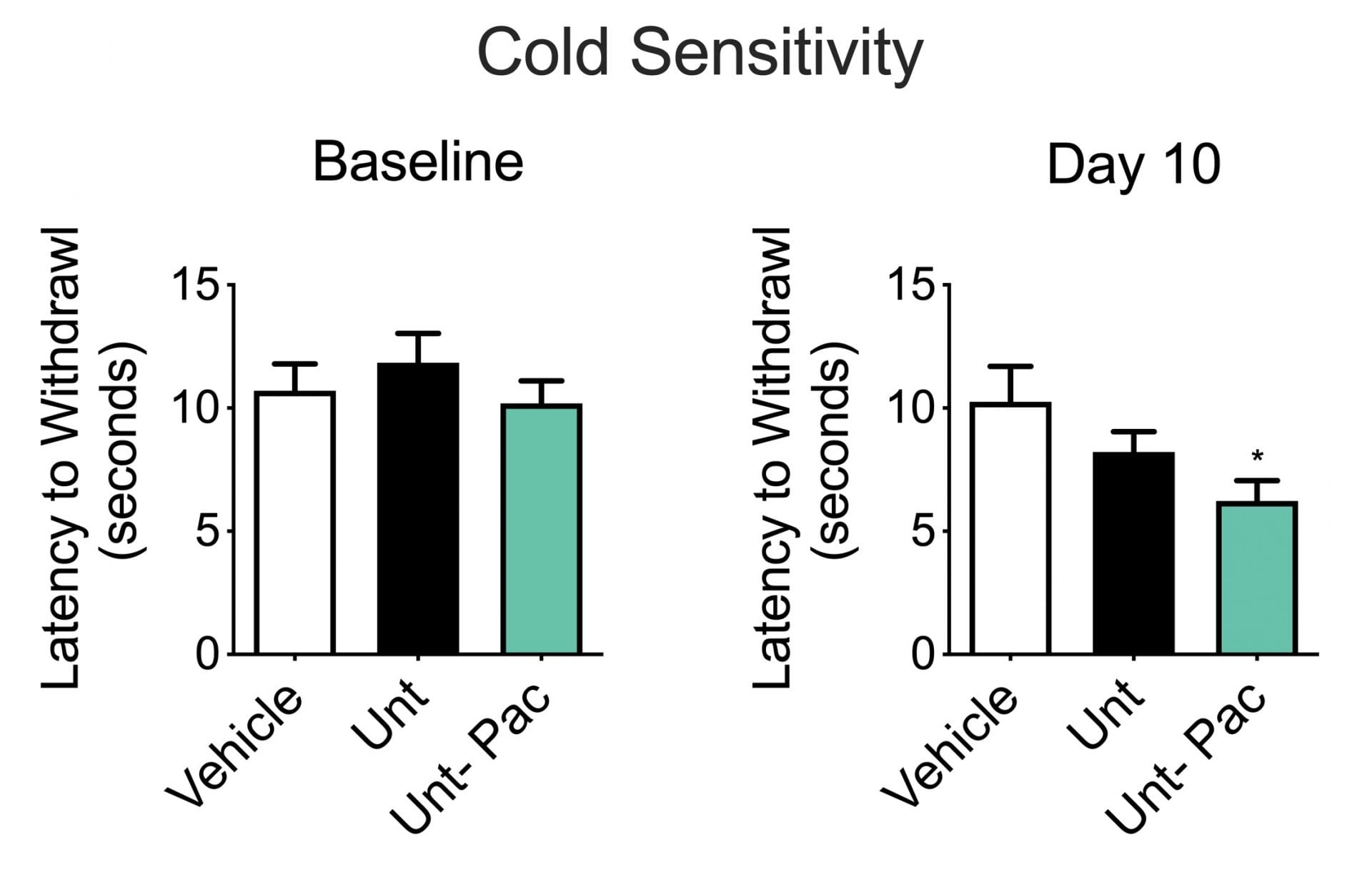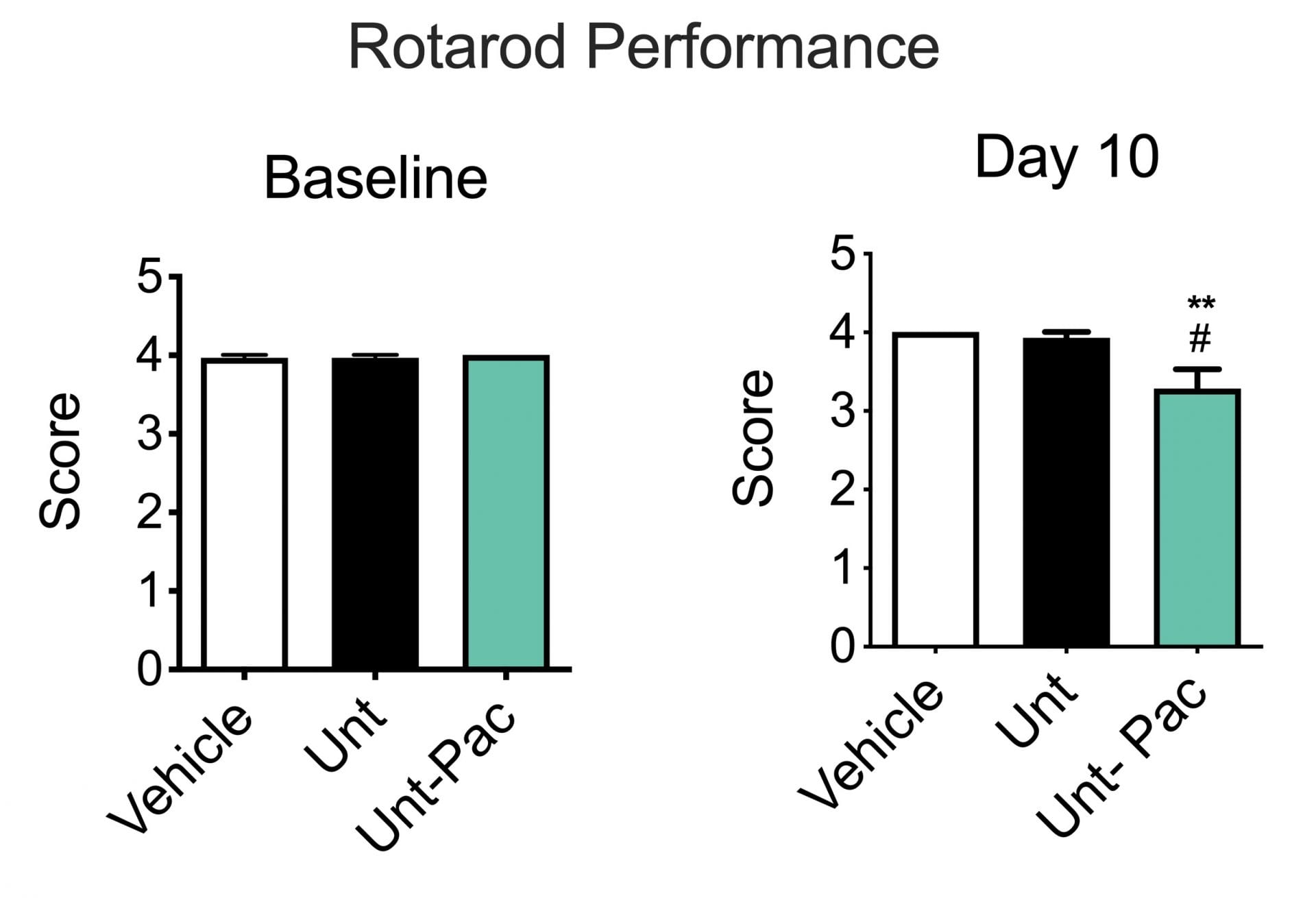Chemotherapy Induced Neuropathy
Discover how Melior’s unique phenotypic screening platforms can uncover the untapped value of your candidate therapeutic
A side-effect of many chronic chemotherapy treatments in humans is development of peripheral neuropathy and its associated neuropathic pain. This condition can be replicated in a translatable fashion in rodents. The model has been characterized using a range of chemotherapeutic agents including paclitaxel, oxaliplatin, cisplatin, vincristine, and others. The induced neuropathy presents as lower thresholds for mechanical sensation, cold sensitivity as well as decreased coordination and balance. Histological effects of dorsal root ganglia and nerve fibers have been characterized with all of these agents.
The study illustrated below shows an example of increase mechanical sensitivity, using von Frey fibers, increase cold sensitivity using cold water bath immersion and reduced coordination using the rotarod method.

Von Frey pain assessment in paclitaxel-induced peripheral neuropathy. Sprague-Dawley rats were orally dosed with vehicle one day prior to paclitaxel i.v. infusion and daily for 10 days thereafter. Paclitaxel alone (Unt-Pac) caused an enhancement of pain sensitivity as measured by a decrease in threshold fiber required to elicit a paw withdrawl using von Frey fibers. Vehicle or untreated groups not receiving paclitaxel showed threshold values similar to baseline. Data are mean ± SEM and evaluated using unpaired t-test (N=14). *p<0.05 compared to vehicle group, ##p<0.01 compared to untreated group.
Cold sensitivity pain assessment in paclitaxel-induced peripheral neuropathy. Sprague-Dawley rats were orally dosed with vehicle one day prior to paclitaxel i.v. infusion and daily for 10 days thereafter. Cold sensitivity was assessed by immersion of the rat’s hindpaw into a water bath containing cold (4°C) water, and latency to paw withdrawal measured. Paclitaxel alone (Unt-Pac) caused a significant decrease in latency to pain response compared vehicle. Vehicle or untreated groups not receiving paclitaxel showed threshold values that were not different from baseline values. . Data are mean ± SEM and evaluated using unpaired t-test (N=14). *p<0.05 compared to vehicle group, Student’s t-test.
Rotarod assessment in paclitaxel-induced peripheral neuropathy. Sprague-Dawley rats were orally dosed with vehicle one day prior to paclitaxel i.v. infusion and daily for 10 days thereafter. Rats were scored for their ability to maintain ambulation on the rotarod at 4 rpm for 3 minutes, using the following scale: (4) normal ambulation, (3) frequent paw placement errors, (2) consistent paw placement errors, (1) partial inability to use limbs, (0) no use of limbs. Paclitaxel alone (Unt-Pac) caused a significant decrease in functional score compared to untreated rats and vehicle rats. Vehicle or untreated groups not receiving paclitaxel showed threshold values similar to baseline. Data are mean ± SEM and evaluated using unpaired t-test (N=14). *p<0.05 compared to vehicle group, #p<0.05 compared to untreated group, Student’s t-test
All of these models respond well to analgesics such as morphine and gabapentin. Chemotherapy-induced neuropathic pain models can be conducted in either rats or mice. Typical study designs entail studies of about 4-8 weeks in duration. Group sizes of 10-14 animals is typical


